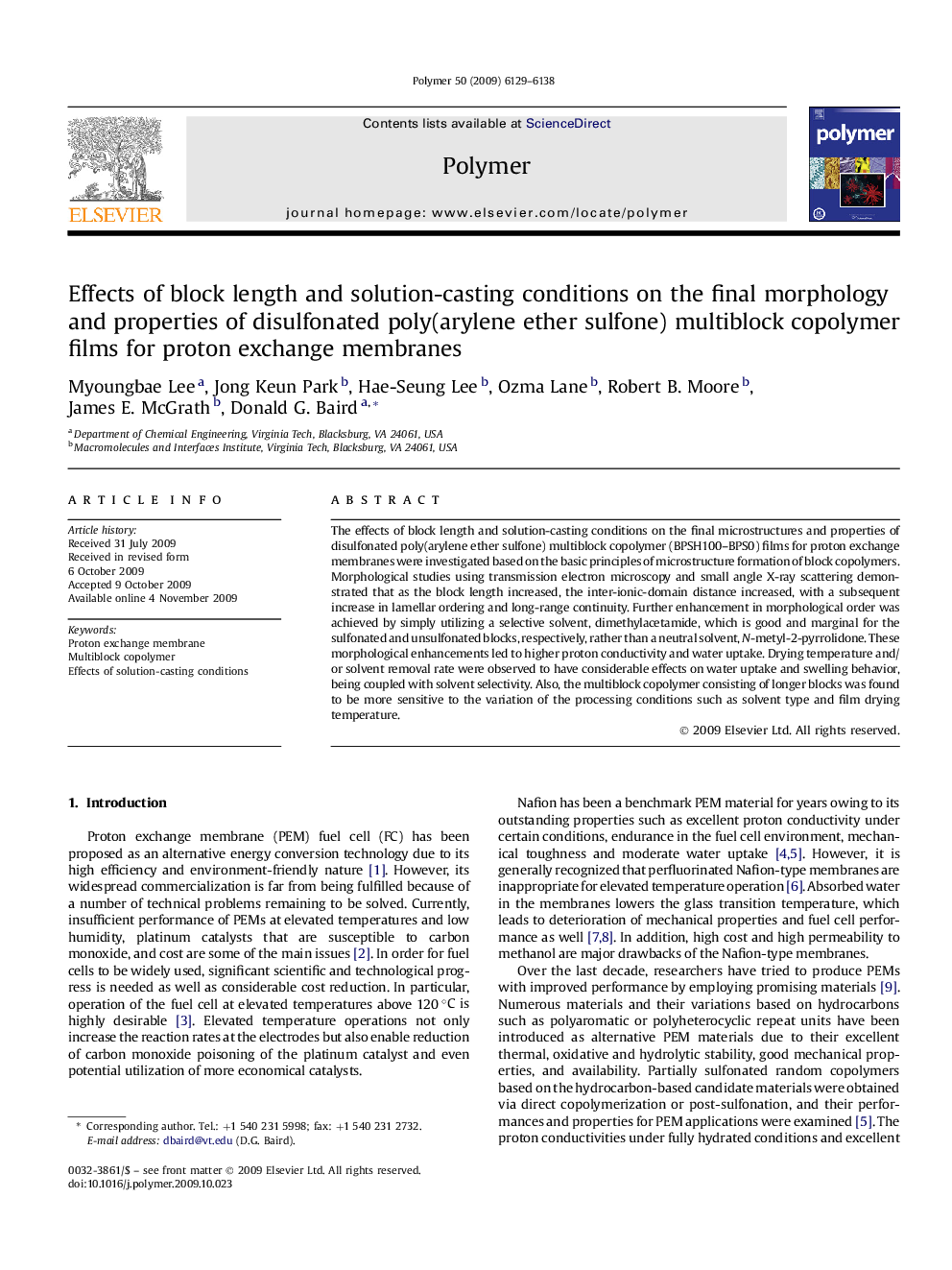| Article ID | Journal | Published Year | Pages | File Type |
|---|---|---|---|---|
| 5187253 | Polymer | 2009 | 10 Pages |
The effects of block length and solution-casting conditions on the final microstructures and properties of disulfonated poly(arylene ether sulfone) multiblock copolymer (BPSH100-BPS0) films for proton exchange membranes were investigated based on the basic principles of microstructure formation of block copolymers. Morphological studies using transmission electron microscopy and small angle X-ray scattering demonstrated that as the block length increased, the inter-ionic-domain distance increased, with a subsequent increase in lamellar ordering and long-range continuity. Further enhancement in morphological order was achieved by simply utilizing a selective solvent, dimethylacetamide, which is good and marginal for the sulfonated and unsulfonated blocks, respectively, rather than a neutral solvent, N-metyl-2-pyrrolidone. These morphological enhancements led to higher proton conductivity and water uptake. Drying temperature and/or solvent removal rate were observed to have considerable effects on water uptake and swelling behavior, being coupled with solvent selectivity. Also, the multiblock copolymer consisting of longer blocks was found to be more sensitive to the variation of the processing conditions such as solvent type and film drying temperature.
Graphical abstractDownload full-size image
